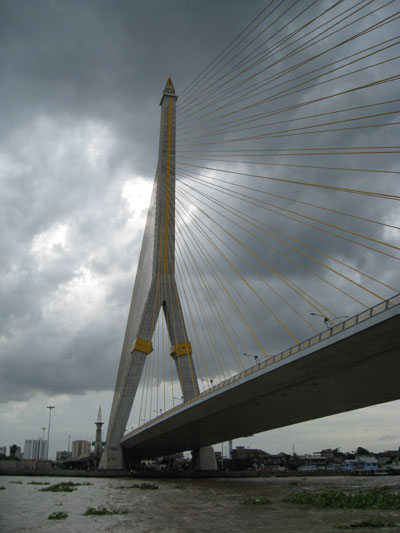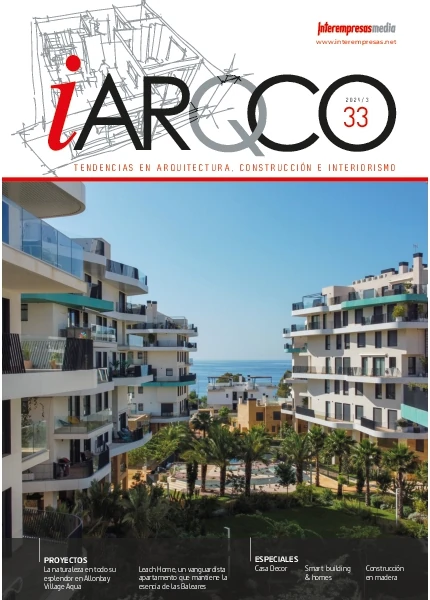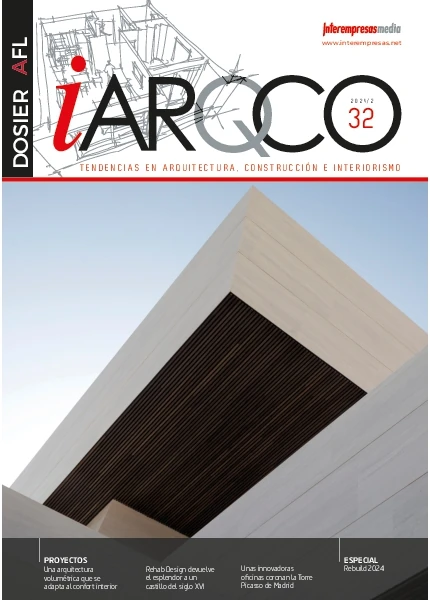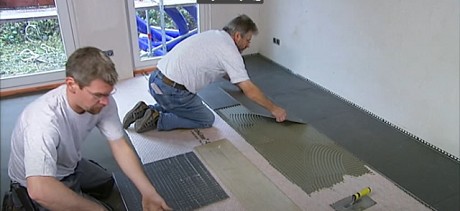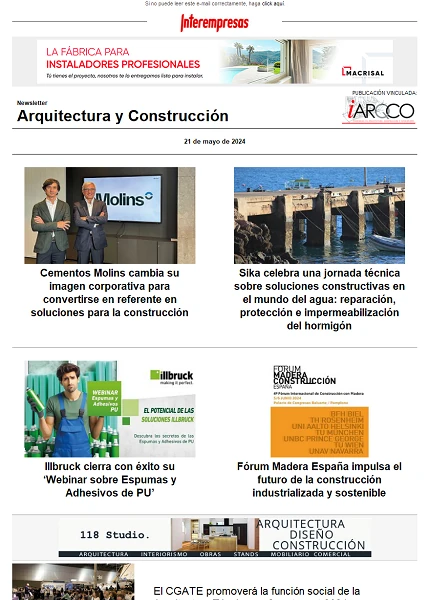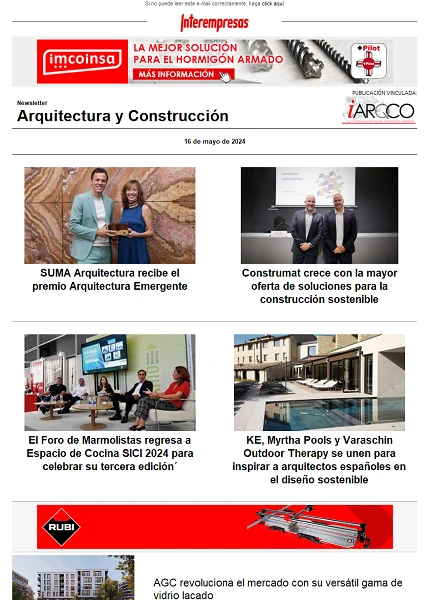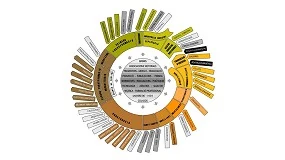Precast concrete, the hallmark of our world
November 12, 2008
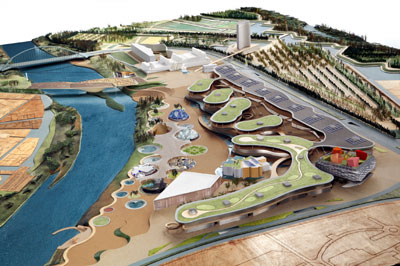
Did you the time of take-off?
In full crisis all indications are that the sale of prefabricated structures will not be too affected by the decline in activity
Our country shares with other countries Mediterranean, hot and sunny, such as Greece, Italy, Morocco or France - in the South - the predominance of the factory (as referred to in technical terms to the pottery), a cheap material and used since a long time for his way of cooking heat.
In the North of Europe, the factory has been an impossible alternative due to the problems of humidity and the cycle hielo-deshielo, which breaks the pottery. Concrete also turned out to be a good material, due to heavy rainfall, so the arrival of concrete precast, back in the 1950s, was a very practical solution, allowing to build regardless of the weather.
In the U.S., for its part, always have has built in steel, for the same reason that we are building out of concrete in situ, its very low cost, so that in North America (as also in South America, where there is not even tradition of construction in concrete in situ) precast cannot break through. In Japan, on the other hand, if years ago wood was one of the most used materials, today, minimalism has been carried to be build in concrete.
But what, here and now, the prospects for the sector of precast concrete? In full crisis building, all indications are that the sale of prefabricated structures will not be too affected by the decline in activity since the bulk of the production of this material is sold to the public sectorthat will continue to build. It is also a time of opportunity for the sector of precast, which if you know well play your chips, proposing innovative solutions, this is, that they operate and are cost-effective, can enter in a wheel of demand to reduce costs and lower prices in the short term. Thus is abonaría the ground so that when it becomes to build attempts to enter the private residential sector. And it is that in times of crisis, who is at risk with a strategy for action, innovation and implementation, will move positions in the starting line and will be better positioned to compete when the engine of the complex machinery of the economic activity to be implemented.
A history of difficulties
To talk about the beginnings of the precast concrete must go back a century ago, when the pieces were manufactured on site or, as the Secretary general of Mnza, Julián Martín of Eugene, "in prefabrication workshops" tells us", or in small little technology manufacturing facilities."
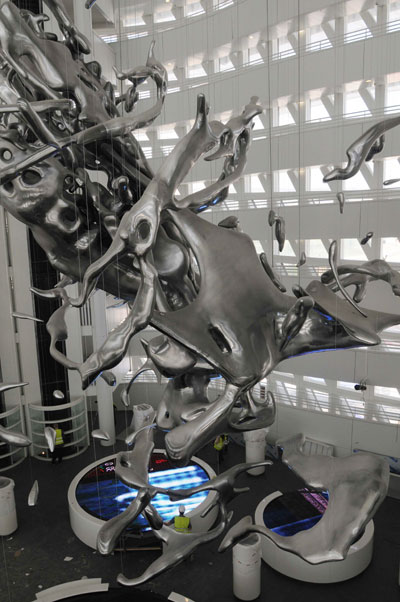
Today, the workshops on site still exist, but linked to certain elements of complex transport, and therefore regards the factories, our partner says that they "have experienced great development, not only in the quantity of products offered to the market"", but also in the processes of quality control, to reach the current levels of high reliability." While today "the Spanish industry - continues our partner - is one of the leading edge in the world, given that manufacturers have incorporated the machinery and most up-to-date technologies, there are some differences with surrounding countries based"mainly, in the climate and building 'culture'. In colder countries, it is only possible to build over several months, prefabricated quality for which the solutions are which can meet the needs of the construction. "In Spain you can usually build throughout the year, still others the advantages that the prefabricated offer," concludes De Eugenio.
Precast concrete: the option for the future

Among concrete
It was not an innovation either. The possibility of transporting the concrete after hardening was the solution to the problems and limitations that was supposed to use its realization in work-linked. Weather conditions were no longer a factor in laying, molds could put in the position more convenient for disposal, and control over the raw material allowed for new forms of cured. The previous production also allowed decrease implementation deadlines and the lowering of the process. Born into the engineering of constructive technology of bridges, soon found utility in the building, providing solutions to large them openings (gaps in walls). But, what are the advantages of concrete precast with reinforced concrete? In the first place, precast concrete, which can be defined as material produced by the industry in the form of finished elements, for his production presents an increase of the magnitudes of all the physical characteristics of reinforced concrete: strengthboth mechanical and corrosion; adherence or surface finish, to give just some examples. Improving the strength properties, the finish and reliability, was joined by a new technology; coming the prestressed and, with him, exceeded the limitation of the reinforced concrete, the figuration. It was then when the door opened at the entrance of new materials such as concrete and high strength steels. In addition, the concrete prefabricated pre-stressed linear pieces would elevate ranges of wavelengths of the reinforced concrete, allowing vessels of beams with a few lights until then only possible in steel. Another of the conditions of the precast concrete is its discontinuity, which was overcome by the addition of a new technique, post-tensioning system of Union.
In any case, the history of the precast concrete is, without doubt, a history of innovation. However, many professionals in the world of engineering and, above all, architecture, criticize that prefabrication technique has lost the innovative potential with which was born and argue that the industry has sought a system mecano, reducing supply to a few pieces that lead to that today is associated prefabrication with simple designs. In addition, the Association of ideas still plays against the prefabricated concrete, who stormed in Spain in the 1960s and whose presence was linked to a low quality.
In practice, and leaving aside the debate on innovation, to the supporters of the prefabricated construction one of the most important ingredients that it provides is to eliminate the 'uncertainty', traditionally associated with the reinforced concrete element entering variable scene of industrial manufacturing such as quality control and accuracy of the final product; the dry construction simplifies the process and, moreover, reduces the need for specialists in work.
The truth is that today in the residential work is built in the traditional way and, although from a technical point of view everything is resolved to adopt the precast, in terms of costs, in many cases is not as competitive as traditional elements; cheaper will only come from the hand of the mass, the repetition. However, the wind blows in favor of the precast bearing in mind that labour is becoming more expensive, as well as the security measures, to the rise in demand and thoroughness. In this respect the architect and Professor of construction of the technical Superior School of architecture of Barcelona, José María González Barroso, has been reiterating in various statements that "today the model of the conventional construction shows clear signs of obsolescence" and stated firmly that "the conventional construction can not cope with the growing demand for quality in" the construction and the technical and productive adaptation required, due to the possibilities offered by the current sector. Therefore required a greater industrialization of the construction processes by means of rationalisation, mechanisation and automation of systems and building techniques. However, the industrialized construction is not a reality perfectly finished, while reducing time and costs of implementation in the work, and the best quality of construction are not always real. "Techniques and industrial systems are very diverse and there are still to develop them and put them, to give a credible material to this constructive model."
Rethinking construction implies necessarily introduce an element in the game board: the environmental requirements. In this regard Gonzalez says that "it is necessary that industrialized construction is more environmentally sustainable that the conventional, otherwise would not be any alternatives for the future." "Must take into account the efficiency in the use of material resources, the possibilities of recycling and the reduction of waste produced in the play". Following on from this point of Eugene says that "in the sector today we use natural products, improved their performance, and perfectly recyclable;" "various independent studies demonstrate the energy savings resulting from the construction with prefabricated concrete".
The material provides the market high resistance that allow significantly reduce resistant sections, improve durability and tackle unique structural objectives
Here are some examples that attest to the long-haul of the precast concrete, which opens the door, with its endless possibilities, to realize any shape, texture, finishing and delivery imaginable. The degree of quality of materials joins the sophistication of the techniques that surround the world of precast, such as the measurement and calibration of parts with ray laser to obtain the exact size. The material itself provides the market high resistance that allow significantly reduce resistant sections, improve durability and tackle unique structural objectives. The industry has been developing modular formwork to give ease of handling, fast recovery of the material, special measures and many accessories to tightness and improved finishes. Today it is possible to achieve optimal finishes with disposable formwork, usually of economic materials such as the polystyrene expanded, or formwork refined, either smooth or textured.
Prefabrication offers unique products such as translucent concrete, a true counterpoint to the classical opacity of this material, which allows the passage of a certain degree of light from one side of the concrete to the other through the incorporation of optical fibers arranged at right angles. Another example of new developments is lightweight and insulating concrete. It presents a reduction of the specific weight of 20 to 60 per cent, achieved through light aggregates and by occlusion of air masses, which, in turn, reduces the thermal conductivity and gives concrete insulating properties.
